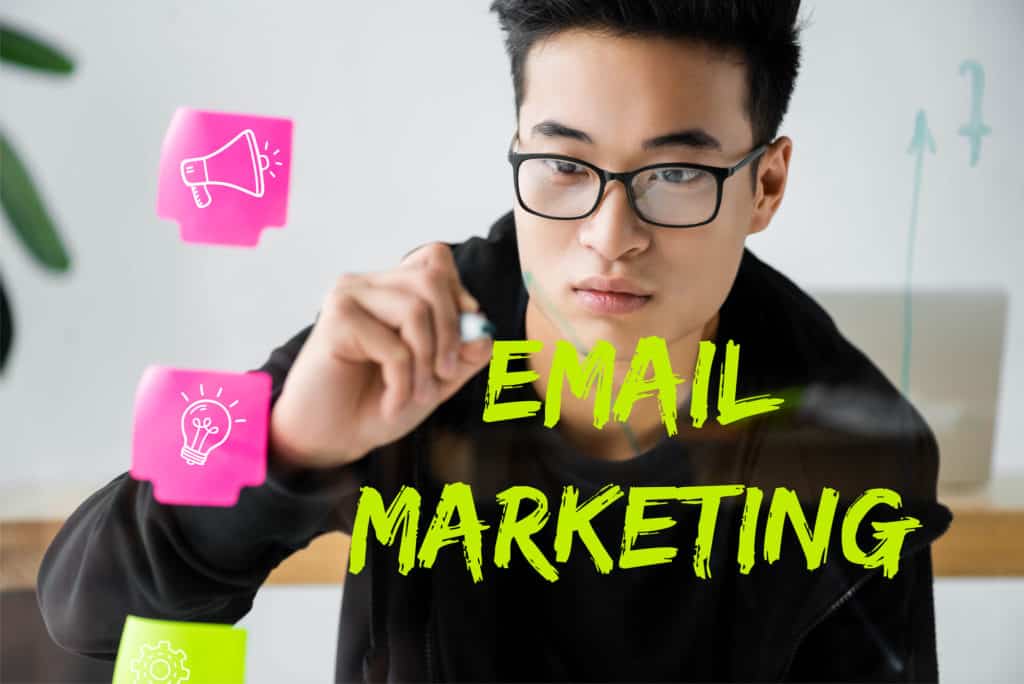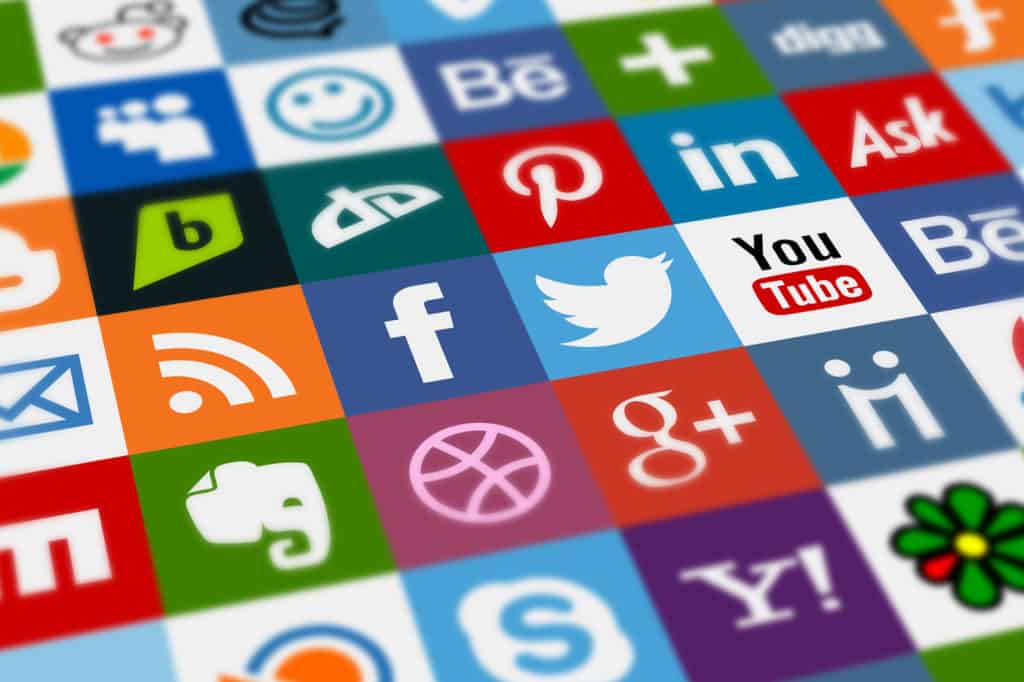Marketing your audiobook means properly preparing it so that the result will be sales for years to come. These marking tips help you trigger the Audible algorithm to promote your audiobook, provide more sales, and save you money on advertising.
In addition, publishing on Audible puts your audiobook in the Apple ecosphere when it is also published on iTunes. Audible and the Audiobook Creation Exchange (ACX) are owned by Amazon and they help authors create and distribute Audiobooks. Also, they are partnered with iTunes, the online store for Apple customers.
This article is for beginners just learning to market their audiobooks. The difficult thing about marketing is there are so many moving parts. I have written this post to help beginners market their audiobooks.

Author Platform
An author platform refers to the ability to sell your works because of who you are and who you can reach according to Jane Friedman. There are multiple aspects of an author platform.
For example, your website makes you visible to your fans. An email list will allow you to nurture the relationship you’ve established with your followers. Also, a launch team is a clear vote of confidence from your supporters that they have a strong connection to you.
Tip 1: Website
Your website is one aspect of your author platform. Its primary purpose is to sell you and your audiobooks.
Your author website is a central location for you and your fans to connect. Your fans can learn more about you and any audiobooks you’ve released or will release through the pages of your website.
Below, I’ve listed some pages required for your website to work for you.
Home
This page should sell your email magnet as well as provide information about up and coming new audiobooks. Once your listeners select your email magnet, you’ll be able to send them a regular email. If you would like to learn more about how to use email magnets, look at section Email List [LIST].
About
This is the page that tells your fans something about you. If you create fiction audiobooks, then this page will be a friendly introduction to fans. If you make non-fiction audiobooks, then this page will establish you as the authority on your topic.
Contact Me
This page allows you and your fans to connect for quick questions. You should include your social media links here as well. However, you’ll probably use your email list to build a relationship with your followers.
Books
This page lists the audiobooks as well as ebooks and paperback books you’ve released. Note that each of your works should get a separate page.
For example, if you’ve written a paperback book, ebook, and audiobook about trees, they should be on one page. A second paperback book, ebook, and audiobook about flowers would be on a second page. Each of these pages must include a description and a link to purchase them.
If you’re an Amazon affiliate, you can use affiliate links for your ebooks and paperback books. Also, use your bounty links for your audiobooks. These links will pay you for new customers that remain members for 61 days.
Your Books page is the perfect location to display samples of your audiobook. You could use a service like SoundCloud that will allow listeners to hear a snippet of your audiobook while remaining on your website. If you choose a good retail sample, this could result in sales.
Blog
Your blog is the only page that is optional. Instead, you may stay in contact with your followers through your email list and social media.
If you choose to use a blog, your frequency of posting will vary depending on if you have a non-fiction or fiction audiobook.
Non-Fiction
A blog for non-fictional audiobooks should have posts one or two times a week. These blog posts could contain information about the audiobook creation process, the artwork you are having designed, and an interview with the narrator.
For non-fiction audiobooks, you could include information the shows that you’re the authority. For example, you may have a story about your experiences that relate to your audiobook.
In addition, search Google for your topic and look for keywords in the search bar. These are keywords that are interesting to your fans and should also be the titles of your blog posts.
You should plan your blog articles for one year to make writing easier. If you know you’ll be writing once a week, plan out 52 non-fiction articles.
Fiction
A fiction writer’s blog should post ever two or three weeks. Like the non-fiction blog, you should write about the audiobook creation process, the artwork you’re having designed, and an interview with the narrator.
However, unlike the non-fiction blog, you could share stories, discuss where you get your inspiration, provide reviews of other audiobooks in your genre, create character biographies, etc.
Also, your blog posts should periodically contain some personal information about you. This helps build a connection with your audience.
To make writing a blog more regular, you should plan your blog articles for one year. This means you should plan out 26 articles for the year.
If you would like to learn more about creating blog posts, take a look at my article How to Publish an Audiobook on iTunes.
Tip 2: Email List
The purpose of email marketing is to create a relationship between you and your fans. The parts of email marketing are an autoresponder, email magnet, and email list.
Autoresponders
The autoresponder is a service provided by MailerLite, AWeber, ConvertKit, etc. I use MailerLite, but I have used AWeber and ConvertKit in the past. I prefer MailerLite for beginners. These services are free for beginners with very few subscribers.
Autoresponders help you to create and send a set of email articles for weeks or months. This means you need to write articles in advance. As you obtain new subscribers, they can learn more about you and your business through these premade email articles while you work on your manuscript.
Email as frequently as you feel comfortable. This could mean sending an email to your subscribers once a week, twice a month, or once a month. If you email less frequently than once a month, your subscribers will forget who you are.
In addition, to regular emails, you should email your list when you have a new audiobook release. Ask them to purchase and review your audiobook. You can also offer ACX giveaway codes so that some of your listeners receive the audiobook for free.
Email Magnet
You should also use your autoresponder to offer your email magnet to your new subscriber. If you’re a fiction writer, some examples of email magnets are a short story, prequel to your audiobook, map of your fantasy world, character biography, etc.
If you’re a non-fiction writer, you could offer a free consultation, membership in a group related to your audiobook, checklist related to your topic, infographic, etc.
Email List
Your subscribers are members of your email list. They have volunteered to give their email address for a free magnet as well as for a chance to stay connected to you.
If you have a non-fiction audiobook, every week send information about yourself. Also, send information about any new audiobooks that may be coming out. Another idea for your email articles is to include news relevant to your audiobook.
In addition, you can use the Google search bar and type in your topic. Google will produce a list of possible keywords. Use these keywords as topics for each of your emails.
If you have a fiction audiobook, every two to three weeks, send information about yourself. You can also send out short stories, character bios, reviews of other audiobooks, etc.
If you would like to learn how to use your email list, take a look at my article How to Launch an Audiobook.

Tip 3: Launch Team
Your launch team is a subset of your email list. They are volunteers who have agreed to support you and your audiobook. Usually, they’ll listen to your audiobook and leave an honest review on Audible.
Some launch teams do more than leave a review. For example, some leave messages on their own social media pages. Others agree to request your audiobook at their local library. Also, some leave reviews on Amazon, iTunes, etc.
In return for this work, you should provide extra perks to your launch team. These gifts are exclusive to your launch team and may include weekly giveaways, contests for best promotion ideas, map of your audiobook’s world, free t-shirts, etc. If your audiobook is non-fiction, you may offer a private consultation, invitation to a mastermind group, etc.
However, do not offer perks or gifts in exchange for a good review. This is against Amazon’s Terms of Service. It could get you kicked off.
The bonuses you offer are in exchange for listening to your audiobook, leaving an honest review, requesting your audiobook at their library, and anything else they’ve volunteered for.
Two Months Before Launch
About two months before your audiobook launches, create your launch team. When you contact your launch team, you should hold the giveaways and contests as I mentioned above. Additionally, you should create videos that show how to place reviews in Audible, Amazon, and iTunes. Provide these videos to your launch team.
When your narrator sends you the completed audiobook, carefully proof it. If you would like to learn more about proofing audiobooks, take a look at my article What is Audiobook Proofing.
If you’re narrating your audiobook, ask your launch team if they would be interested in acting as beta listeners. They’ll get an early listen to your audiobook and as a result, will be able to leave an honest review on launch day.
Video yourself proofing your audiobook and use that video as a promotion for your launch team.
Once you’ve proofed your audiobook, you can submit it to Audible/ACX’s quality assurance team. Audible/ACX doesn’t provide an exact date when they’ll release your audiobook. Instead, they provide an estimate of 30 days. You’ll need to monitor email closely and stay in contact with your launch team.
Launch Day
On launch day, alert your launch team that your audiobook has been released. If you’ve provided an early version of your audiobook, ask them to leave a review on Audible.
If they haven’t had an early version of the audiobook, provide giveaway codes to them. The purpose of giveaway codes is to get a free copy of the audiobook and leave a review.
If your launch team already has an early version of your audiobook, then offer the giveaway codes to the rest of your email list or on social media. This is a great way to find new listeners.
It’s important that you keep track of who gets a giveaway code so that you can prompt them to listen to your audiobook and leave a review.
You should also offer your bounty links to your launch team and the rest of your email list. If there are subscribers who don’t have an Audible account, it’s a chance for them to get your audiobook for free.
Depending on what you’ve agreed to with your launch team, now is the time to set those plans in motion. For example, you could remind them to request your audiobook at their local library, leave messages on their social media pages, etc.
Also, remind your launch team about the videos that show how to leave reviews on Audible, Amazon, and iTunes. Your goal is to make this process as simple as possible for your launch team.
If you would like to learn more about successfully promoting your audiobook, take a look at my article How to Launch an Audiobook.

Audiobook
Tip 4: Keywords & Categories
Keywords
Search words and phrases that readers and listeners use to find your ebooks, paperback books, and audiobooks are called keywords. You should use these keywords in your title, subtitle (if applicable), and description.
When Audible customers search for a type of audiobook, yours will show up on the list if you’ve used keywords. However, don’t keyword stuff. Use the keywords as they would appear naturally in a sentence or a title.
Amazon and Audible fill in search phrases if you type in one keyword.
For example, if you’re writing a non-fiction audiobook about rocks, start by typing in rock and wait to see what Audible suggests. Some Audible suggestions are rockstar, rockstar romance, rockslide, rocks and minerals, etc.
After you select rocks and minerals, you’ll see a book about gems. At this point, you would type in gems and wait for more Audible suggestions. The Audible suggestions are gems and gemstones.
After you select gemstones, you’ll see several books about crystals, gemstones, beginner’s guide, money and wealth, how to attract success, crystals for healing, etc.
If you continue this iterative process, you could find several keywords that will help describe your audiobook. Note that you won’t be able to use all of the keywords, but try to use the ones that fit best with your audiobook.
Keep in mind that Audible and Amazon have different but similar keywords. If you create a description for an ebook and paperback book on Amazon, check that the same keywords can be used on Audible. You may also need to add different keywords for your audiobook.
Categories
Unlike Amazon, Audible doesn’t allow you to choose the category for your audiobook. Instead, they choose it for you. I still think it’s worth the time to try to figure out where your book belongs. Because, if there’s an error, you can write to Audible and have them change your audiobook’s category.
Audible’s categories aren’t the same as Amazon’s. Look carefully through the list of Audible categories and make sure you have the correct one for your audiobook.
Tip 5: Cover
Your cover is a critical part of marketing because it’s the very first thing your customer will see. Your cover needs to make an Audible customer stop scrolling and click on your audiobook to read the description.
Before authors begin work on their audiobook, they usually have a cover for their ebook and paperback book. If this is the case, then ask your cover designer to create a copy of the exiting cover but have it formatted to 2400×2400 pixels.
If you don’t already have a cover, then you’ll need to start from the beginning. A good designer will start by asking you a lot of questions about your audiobook. Many will have a detailed form for you to fill out.
Cover Art
The purpose of your cover art is to catch your listener’s attention. Also, it needs to convey your audiobook’s genre while saying some specific about the book.
For example, let’s look at the type of cover art you might have if you’re audiobook is a space opera featuring a female character who has been framed for a murder. All space operas contain an image of a spaceship. In addition, you may want to have an image of your main character staring at a dead crew member.
Fonts
Your designer will also suggest font types and colors. These fonts play an important role in helping your audiobook to stand out as well as fit in with its genre.
For example, a fairy tale audiobook should have a traditional font with serifs. On the other hand, a business book should contain a modern san serif font. Also, use colors that contrast with the cover of the book.
If you’re not a graphic designer, pay to have your audiobook’s cover designed. As I stated at the beginning of this section, it is critical to have a well-developed audiobook cover.
Graphic Designer
Your designer could create a clever way to show your cover so that it will make the Audible customer stop click. Keep in mind that your designer may also have some ideas about what else could go on your cover.
If you’re looking for a graphic designer, you could use Fiverr or another online market place. A good designer will present you with a questionnaire for you to fill out. I always include samples of other covers in the same genre as my audiobook.
I have never found a designer I liked in the first round. It didn’t matter if I paid hundreds of dollars or tens of dollars. For me, the whole process is very iterative. I suggest selecting a market place (Fiverr, Upwork, etc.), choosing between three and five designers, and paying between $20 and $50 per designer.
After you choose the first round of designers, you may not like their work, but you’ll learn something from each of them. Next, you should repeat the process and choose another set of designers. You should use the information you learned from the first designers and add it to the questionnaire for the second set of designers.
Tip 6: Description or Blurb
The purpose of your description or blurb is to sell your audiobook. The first sentence is your hook that entices the shopper to read the next sentence. Your second sentence should tempt the customer to read the third sentence and so on.
If you have already written a description for your ebook and paperback book, then start with that. Next, look at the keywords (see section Keywords) on the Audible website. Try to include those keywords in your description.
If you intend to write a new description, use the lists below to make sure you include all the necessary elements.
Fiction Audiobook Descriptions
- The first sentence should be a hook to get the customer’s attention.
- You should include a description of the protagonist who is the person to root for.
- Describe your antagonist who causes problems for the hero.
- You should include social proof to show that everyone likes your audiobook.
- End with a call to action to purchase the audiobook.
Non-Fiction Audiobook Descriptions
- The first sentence should be a hook to get the customer’s attention.
- Add one or two sentences about the customer’s pain point.
- Describe how your audiobook could help the shopper.
- Show how your audiobook is better than the competition.
- Promise something more if your customer purchases your audiobook. Make sure your audiobook delivers on that promise.
- End with a call to action to purchase the audiobook.
How to Write Your Description
If you know how to write a description, use the lists above and create your sales copy. When you’re finished, skip ahead to the next step.
If you don’t know how to write a description, look at other audiobooks in your genre and read the descriptions. Find a few that you like and save them.
Using the list of what goes into a description, saved descriptions, and keywords from the previous section, go ahead a write what you think should be in your description. After you’ve finished, you’re going to give your draft to a copywriter on Fiver or some other freelance website.
I strongly recommend writing your description because it helps you to figure out what’s important about your audiobook. In addition, it helps you explain to a freelancer what you need in your description.
After you’ve written your description, go to your list of keywords. See which ones you can include. Make them stand out in some way so that the freelancer will understand they are keywords.
Go to Fiverr, Upwork, Freelancer, etc. Look for a freelancer who has experience writing descriptions in your genre. They may have a form for you to fill out, but always send your draft description and the list of keywords.
When I work with freelancers in online marketplaces, I get much better results when I provide them with as much information as possible.
Keep in mind, that you may have to try out several freelancers before you find one that creates a great description.
Tip 7: Reviews
Customers who are trying to decide whether or not to purchase your audiobook may need social proof. This means they need to see reviews posted by real people. Hopefully, most of the reviews will be good, however, you need not so good reviews too.
The not so good reviews show other customers what to expect. For example, I ran across an ebook with almost an equal number of four and five-star reviews as one and two stars. Ironically, the reasons for both sets of reviews were the same—the plot was slow at the beginning of the ebook.
The customers who left the four and five-star reviews liked the fact that the author took her time to show the details of the ebook’s world and how the characters interacted with it and each other. They felt you could easily understand why the characters behaved the way the did.
The customers who left the one and two-star reviews hated the fact that the author took so many pages to show the ebook’s world and character background. They felt the plot took too long to get started.
Your launch team’s primary job is to leave honest reviews. You need both the good and not so good reviews. If you need to, explain the type of reviews you’re expecting from your launch team. See the Launch Team section to learn about organizing reviews.
Tip 8: Giveaway Codes & Bounty Links
Audible provides 25 giveaway codes for the US and 25 giveaway codes for the UK. They are accessible on your ACX dashboard. The purpose of these codes is to allow listeners to leave an honest review.
An honest review means that they can say why they liked or disliked in the audiobook. Encourage your listener to leave a review either way with a short explanation of why the liked or disliked the audiobook. The Audible algorithm uses this activity to promote your audiobook to new listeners.
As the author, you can either give the codes to your email list or give them to new listeners. When you give out the codes make sure you have the listener’s email address so that you can prompt them to leave a review if they forget.

Social Media
The main goal of social media is to provide platforms that allow you to connect with others. Since connecting is the purpose, you’ll need to be on this platform every day. Therefore, you must choose a platform you already enjoy.
If you’re new to marketing audiobooks, I would suggest you start with only one social media platform. Your goal is to find the short cuts so that you can remain active without losing a lot of time that you could use for something else.
Below, I’ll cover YouTube, GoodReads, and Twitter. These are the platforms many authors use. However, if you would like information about other platforms like Facebook, Instagram, Pinterest, and Podcasting, take a look at my article Do Authors Need Social Media.
Tip 9: YouTube
YouTube is my favorite platform for reaching new listeners. I’ve lost count of the number of author tube channels I’ve discovered. Also, this platform does not charge to reach new listeners, unlike Facebook. And, it is not as crowded as Twitter.
Brand Channel
The way it works is you first create a brand channel. It will use the same Gmail address as your personal email, but when you ask for a brand channel YouTube knows this is a business. I would suggest a brand channel name with the word “author” in it.
Video Content
Once you’ve created your brand account, start posting videos about your recording studio, audiobook cover, images from your paperback or ebook, research you did before writing your manuscript, etc.
In order to produce a successful channel, it’s critical to post regularly. Post once or twice a week when you first get started. After a few weeks, you can slow to once a week or once every two weeks.
Make sure your videos end with a call to action to click on other videos on your channel. You can also direct fans to join your email list. (See Tip #2 Email List).
The outline for your posts should be similar to this:
- Intro: 1) Start with a question that includes a benefit—hook. 2) Include an outcome which fans will get from your video. 3) Include a testimonial so that your fans trust you.
- Answer the hook: You can answer the hook by telling a story or describing a sequence of steps to the solution.
- Ask a question: This should be a question that requires a comment.
- Outro: Ask followers to like or dislike the video, subscribe, click to the next video, or join your email list, visit your website, etc.
If fans comment on your posts, make sure you respond to every comment. Your goal in the first year of your channel is to create engagement. The more engagement the YouTube algorithm sees, the more people they’ll show your videos to. Once you reach 4000 watch hours and 1000 subscribers, you can start to monetize your channel.
Filming Video
As a beginner, I strongly recommend that you start making videos with your phone. If you are close enough to your phone, you don’t even need an extra microphone.
However, if you are going to filming in a large room, you may want to invest in a lavalier or lapel microphone. This is a mic that connects to your clothing on one end and your camera on the other.
In addition, you may want to invest in extra lighting, unless you’re near an open window on a sunny day.
The challenging thing about making YouTube videos is the time it takes to edit the video. If you are a beginner, I recommend you practice talking in front of your camera a few times before you begin.
Next, film your video in one go. Don’t spend too much time editing the middle of the video unless you have a very bad error. Instead, edit the beginning and end of the video, then upload it to YouTube.
Tip 10: GoodReads
The GoodReads platform is designed specifically for readers and authors. This platform is composed of hundreds of small forums where readers and authors discuss ebooks and paperback books.
Even though GoodReads is not focused on audiobooks, most authors will have an ebook and paperback book before they produce their audiobook. You can direct interested fans to your Amazon page that will list your ebook, paperback book, and audiobook.
However, it may be better to direct new fans to your webpage. On your webpage, you can provide a snippet of your audiobook which will expose your followers to it.
Author Account
The way it works is first you create an author account. GoodReads will offer to link to your Facebook account. Don’t accept! Instead, use an email address that isn’t known to Amazon.
You shouldn’t allow Amazon too much insight into your friends. If you’ve friended some of your followers, and they leave a review on Amazon, Amazon will delete their reviews! I’m referring to legitimate reviews from your fans.
Amazon owns GoodReads, and they are hyper-focused on removing what they feel are biased reviews. As a result, they don’t want your friends and family to leave a review.
After you create your author account, claim your ebook and paperback book from Amazon. Next, customize your author page—make sure your name is displayed the way you’d like. Finally, add an image of yourself.
GoodReads Blog
You could use GoodReads as a blog to attract new fans. Some of the things you could discuss are showing information about your writing process, sharing ebook reviews of other books in your genre, holding question and answer sessions, creating quizzes, making book polls, doing giveaways, etc.
However, like Facebook, you don’t own the list of people who like your content. You’re really building a readership for GoodReads. You must also get your fans onto your email list.
For example, the giveaways could work if you require everyone to leave their email address to enter the contest. However, make sure you provide an email magnet for all email addresses in addition to awarding the winner of the contest.
Paid Advertising
If you are new to GoodReads, don’t pay for advertising yet. Instead, focus on creating relationships with your followers. This is a skill you will need anyway once you start paying for advertising. It’s best to learn this skill before wasting a lot of money.
Tip 11: Twitter
Professional writers like Stephen King and JK Rowling regularly engage on Twitter. Also, Twitter allows you to stay up-to-day on the latest goings-on of your fans.
For Twitter to work or you, it’s important to tweet four to six times a day. This involves retweeting, following other authors, and connecting with your fans.
However, if you organize your time on Twitter, you don’t have to spend much time on the platform. Every once in a while you’ll need to let others know about your audiobooks when they come out. Most of the time, you’ll spend making connections with other authors and fans.
Some ideas to tweet about include holding an audiobook cover reveal, asking open-ended questions, creating a tweet of frequently asked questions, etc.
You should follow other authors who write in your genre. In addition, go to their followers and start following them too. Try to maintain an even ratio of people you follow, and the people who follow you back.
Keep in mind, that Twitter is very crowded, therefore, even if you’re tweeting several times a day, your tweets will get buried quickly.
Use hashtags when you tweet to increase the number of people who see your tweets and then follow you. Some popular writer hashtags are #writerslife, #writers community, and #amwriting.
Automation tools will help you decrease the amount of time you need to spend on Twitter. You could create four tweets ahead of time and have the automation tool send it out for you during the day.

Traffic
Tip 12: Organic Traffic
Organic traffic refers to people that find your audiobook without any promotion on your part. On Audible, this works by creating an eye-catching cover, writing a compelling description, and sprinkling in the right keywords.
The Audible algorithm uses its knowledge of its customers and marries it with information about your audiobook. However, it’ll do this with several other audiobooks in your genre. This is the reason that it’s critical to have the best, cover, description, and keywords.
In addition, ask your email list to purchase your audiobook. You probably won’t have millions of fans on your email list. However, when you first publish your audiobook, have your followers purchase, and leave comments.
The Audible algorithm will notice all of the activity from your email list and promote your audiobooks to other potential fans. If you have the right keywords, the algorithm will connect your audiobook with listeners. If you have a great cover page and description, they’ll purchase your audiobook.
Also, you should use your email list by holding a contest and rewarding the winners with giveaway codes. Some authors use the giveaway codes to reward their launch team, and others use the codes to attract new listeners.
If you would like to learn more about obtaining organic traffic, take a look at my article How To Sell Audiobooks.
Tip 13: Paid Traffic
If you are new to marketing audiobooks, then don’t pay for traffic yet. Instead, focus on learning to create a launch team and staying in contact with followers.
If you are interested in paid traffic, the most efficient way to use it is on the day of your launch. Like I said earlier, when your followers go onto Audible, purchase your audiobook, and leave reviews, the Audible algorithm notices this activity. It then starts promoting your audiobook to other customers.
If you apply paid advertising while your launch team is purchasing and leaving reviews, you will dramatically increase the activity during your launch. This increased activity will cause the algorithm to work harder to show your book.
The obvious challenge is Audible doesn’t have its own native advertising platform. Instead, you have to use Facebook. I’m not a fan of Facebook because it is quite expensive. However, if you are only running ads for one to three days, this could be an acceptable cost.
The details of how to create a Facebook ad campaign are beyond the scope of this post. However, I recommend Mark Dawson’s Self Publishing Formula. This is a set of courses that includes Facebook ads, ads design for authors, and more.
Conclusion
This post includes several tips for marketing your audiobook. It starts with creating your author platform, marketing your audiobook, social media, and traffic. There are several variations on the methods I have listed above, however, I tried to focus on tips that were appropriate for beginners.
Have you started marketing your audiobook? What have you found to be the most challenging aspect? Let me know in the comments below.

